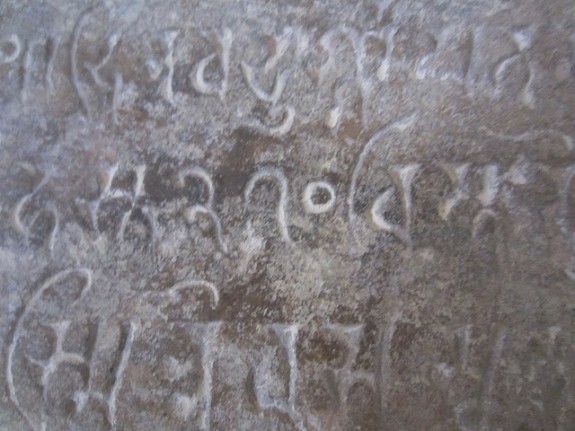You Can Visit the World’s Oldest Zero at a Temple in India
Indian mathematicians were the first to treat zero as an equal
The idea of zero was born, says journalist Alex Bellos, from “the idea of nirvana, the transcendent state of “nothingness”, when you are liberated from suffering and desires.” And about 1,500 years ago, someone invented a symbol for that idea: 0.
The circle we know as “zero” was invented in India, and on the walls of a temple in Gwalior, you can find the oldest known representation of the circular symbol for nothing. Bellos, while working on a documentary about the ancient 0, traveled to Gwalior to see it. At some point, a couple of professors explained, the idea of “nothingness” became a mathematical concept:
In fact, the word used in philosophical texts to mean nothing, or the void, is “shunya”, the same word later used to mean zero….”Shunya means a sort of salvation,” said. “When all our desires are nullified, then we go to nirvana or shunya or total salvation….
For George Gheverghese Joseph, a maths historian at the University of Manchester, the invention of zero happened when an unknown Indian mathematician about two thousand years realized that “this philosophical and cultural concept would also be useful in a mathematical sense.”
Other cultures, says Bellos, had markers to help indicate numbers above 9, but the Indian mathematicians were the first to treat zero as an equal, as a number in its own right.
Right in the center of this image the characters “270″ stand out, surprisingly modern numerals etched in an ancient temple in Gwalior. Photo: ccarlstead
More from Smithsonian.com:
Plants Do Math Every Single Day
Math Prodigy Shakuntala Devi, ‘The Human Computer,’ Dies at 83
Dyscalculia, Like Dyslexia for Numbers, Could Explain Why You Suck at Math
/https://tf-cmsv2-smithsonianmag-media.s3.amazonaws.com/accounts/headshot/smartnews-colin-schultz-240.jpg)

/https://tf-cmsv2-smithsonianmag-media.s3.amazonaws.com/accounts/headshot/smartnews-colin-schultz-240.jpg)